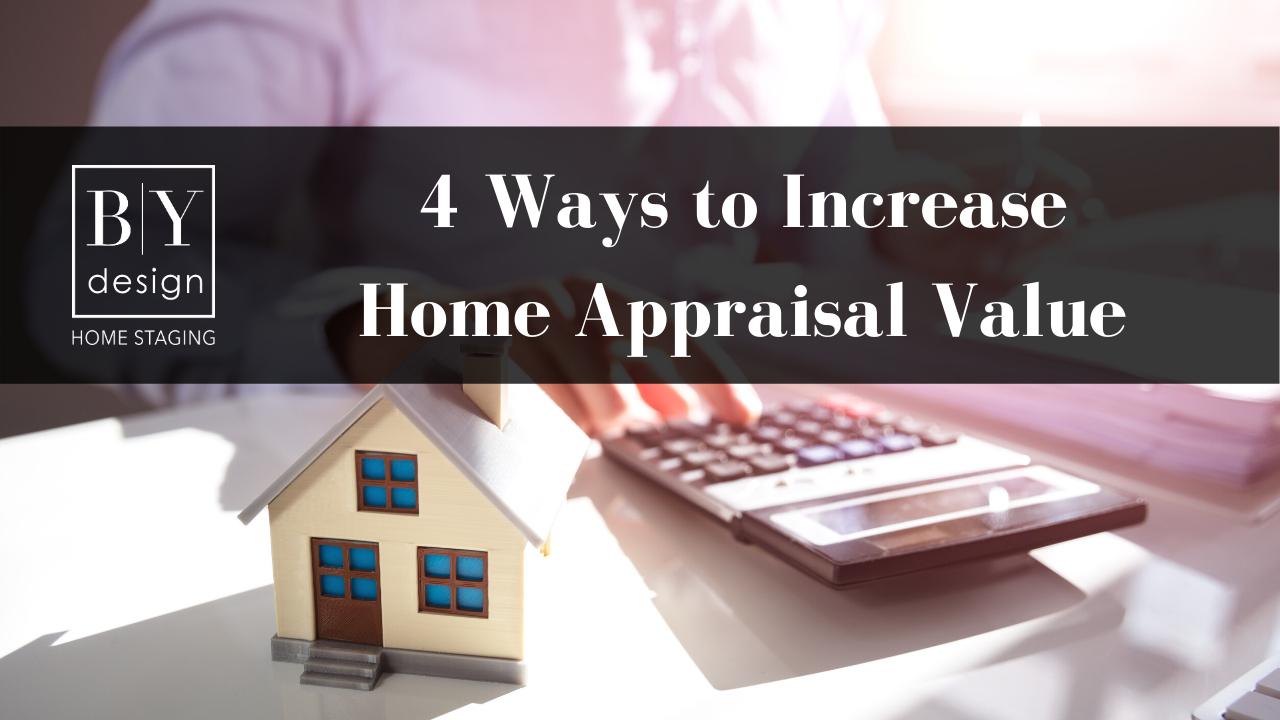4 Ways to Increase Home Appraisal Value in San Antonio and Austin
Dec 17, 2020
When selling their homes, sellers obviously want to get as much money as they can. While sellers set the price, they aren’t in charge of how much their homes are worth. A home appraisal determines the value of a home, which depends on the market, quality, and size of the house, and other factors. However, there are several ways that sellers can increase home appraisal value in San Antonio and Austin.
Since home sales typically involve banks and loans, lenders are often the party that requires the appraisal. Home Appraising Group says “commonly, appraisers are hired by mortgage lenders to estimate the value of a home involved in a loan transaction.”
In order to get the highest value for a home, sellers need to make it appealing to both the potential buyer and the appraiser. Here are four steps to take to maximize a home’s appraisal value in San Antonio and Austin.
1. Invest in Staging
Both the interior and exterior of a home play a very important role in deciding its value. The outside of the house is the first thing a potential buyer and the appraiser will see when they arrive. If curb appeal is low, the home starts off at a lower appraisal score.
Photo by Shoot2Sell Photography.
Investing in hiring a certified staging design professional, like BY Design Home Staging, is a guaranteed way to make sure both curb appeal and the interior space look fantastic, and so, worth more to buyers and appraisers.
BY Design will advise on how to improve landscaping, remove clutter, and select paint for anything that needs a fresh coat. To get you started on paint, we complied a list of the 20 best white paint colors to update your listing.
Our lead stagers work to show off all the square footage of a home to prospective buyers, and any space taken up by unnecessary furniture and clutter detracts from the perceived size of the place. Plus, if there is clutter everywhere, the appraiser won’t be able to properly see all aspects of the home. If they can’t properly do their job, that will affect the value they calculate for the home.
If anything is clearly damaged, we will likely recommend repairs. If one thing is seen to be neglected, the impression is that the rest of the home's maintenance has been neglected as well. This includes the paint condition. If paint is chipping or cracked, the seller will need to patch or repaint. Click here to stage your listing prior to a home appraisal.
2. Research the Neighbors
This is where keeping up with the Joneses can really pay off. Armed with knowledge of comparable home sales in their neighborhood, sellers can assess the potential appraisal value.
Sellers should consult with their Realtor, working together to compare similar homes in the area and come up with a home value estimate of their own. What do nearby homes close in size sell for, on average? What features are common among those with higher sales prices? What condition are the high-value homes in?
Thanks to the internet, this information is readily available for sellers to gather easily. Websites like Trulia show homes that recently sold in any area, but you can't rely on the values that those sites indicate for a particular property. Run a Comparative Market Analysis (CMA) for a much more accurate assessment.
Since it is technically the lender hiring the appraiser, the seller may not even see the appraisal report or have an opportunity to contest that valuation. The bank is not really interested in accepting a 'second opinion,' as they are concerned with mitigating their own risk exposure. This is why the property must be in prime condition, with amenities highlighted and negative features minimized through staging.
While appraisers operate from a set of standards, they are still human. Many factors are somewhat subjective and an appealing home will rank higher in their range of appropriate valuation.
3. Keep Records of Everything
Recent home sales in the area aren’t the only records a seller should keep. Homeowners should hold on to any documentation of repairs, renovations, and taxes.
Stagers will typically take before and after photos of the rooms they stage. Sellers should also have before and after photos of any repairs and renovations from their time owning the house. These photos can help the case with the appraiser by illustrating valuable upgrades that were made to the home.
In this renovation, by our Co-Founder Debbie Boggs, before and after photos document huge changes in home value.
4. Work with the Appraiser
Some sellers might look at the appraiser as the opposition. They may be thinking, “Why do they get to decide the value of my home?” Of course, any seller wants their home to go for the highest possible price.
Sellers should be reminded that home appraisers exist to protect buyers and lenders. When they buy a new home, they too will appreciate having a neutral third party involved.
The more prepared and cooperative the seller is to the appraiser, the better their chances are of getting an appraisal that matches their research. If the seller is uncooperative and hovering over their shoulder, the appraiser will see that as a sign that there is something wrong with the house.
As long as the seller prepares ahead of time–presenting the best home they can with home staging, repairs, and other strategies–the process should go smoothly. By presenting their own research, and allowing the appraiser to do their work uninterrupted, the seller is setting themselves up for success.
Guest blog by Jennifer Bell of Home Appraising Group, specialists in residential real estate appraisals for mortgages, estates, divorces, tax appeals, bail bonds, and much more.
Stay connected with news and updates!
Join our mailing list to receive the next blog post delivered straight to your inbox.



